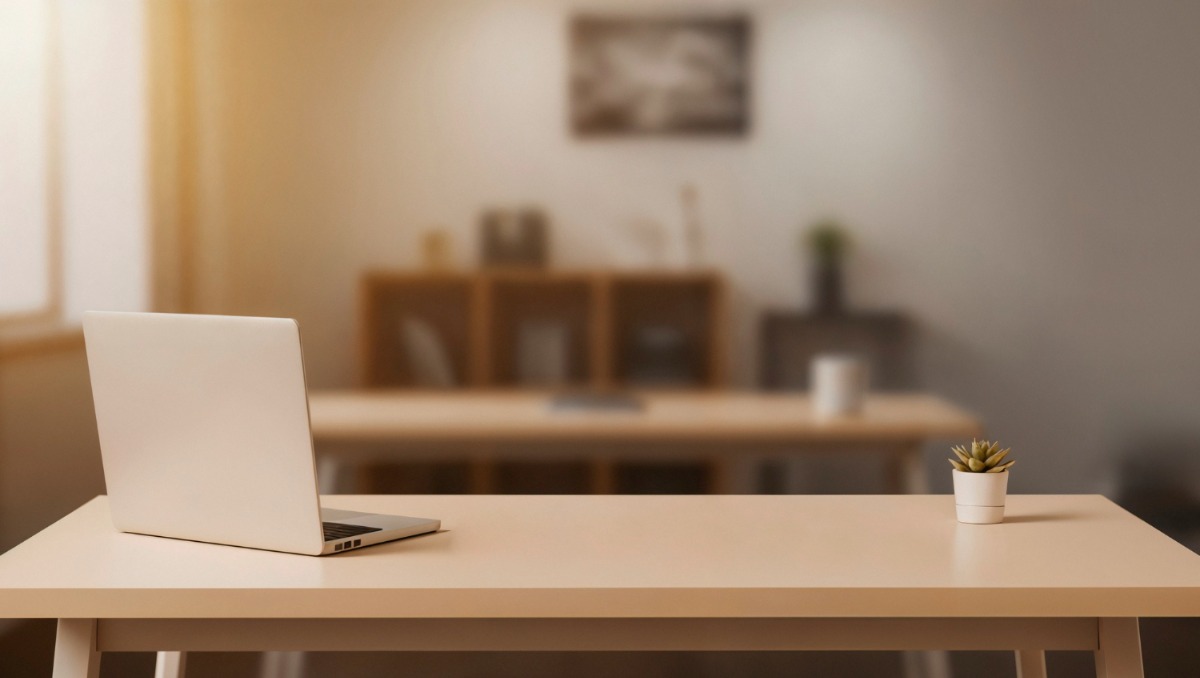Choosing the right wood for your home office furniture isn’t just about aesthetics; it’s about finding the perfect balance between durability, style, and functionality. Hardwood and softwood each offer unique qualities that can affect everything from the sturdiness of your desk to the overall vibe of your space. Hardwoods like oak and maple bring strength and elegance, while softwoods like pine offer a lighter, budget-friendly option with a more relaxed feel.
Key Takeaways:
- Hardwoods are typically darker and stronger, offering better scratch resistance and durability.
- Softwoods are lighter and more prone to chipping, making them easier to carve with a chisel.
- The best choice depends on your space, style, and investment goals.
In this article, we’ll compare the properties of hardwoods and softwoods to help you decide which is best for your home office. Whether you’re looking for something long-lasting or just want a piece that’s easy on the wallet, we’ve got you covered.
Hardwood vs Softwood: What Homeowners Should Know

Hardwoods grow on deciduous trees such as oak, maple, walnut, and cherry. These trees shed their leaves each year and take decades to mature, which gives the wood greater density. Hardwoods often show deep, complex grain patterns that give furniture a distinctive character. With proper care, hardwoods can serve for decades or even a century. They are well-suited for desks, cabinets, or heirloom-quality shelves.
Softwoods, by contrast, come from coniferous trees such as pine, spruce, cedar, fir, and redwood. Because these trees grow quickly, they produce wood that is lighter, less dense, and easier to shape. Softwood grain patterns are straighter and more uniform, creating a casual and warm look that works well in relaxed spaces. Softwoods do not last as long as hardwoods, but they are practical for lighter furniture you may want to move or replace after a few years.
If you are unsure what type of wood you are looking at, a few quick checks can help:
- Grain: Hardwoods usually show tighter, more intricate patterns, while softwoods display straighter lines.
- Density: Pick up the piece. Hardwoods feel heavier because of their higher density.
- Weight: A maple board will feel noticeably heavier than a pine board of the same size.
- Species: Knowing the tree type is the most reliable guide. Oak, maple, and walnut are hardwoods; pine, spruce, and cedar are softwoods.
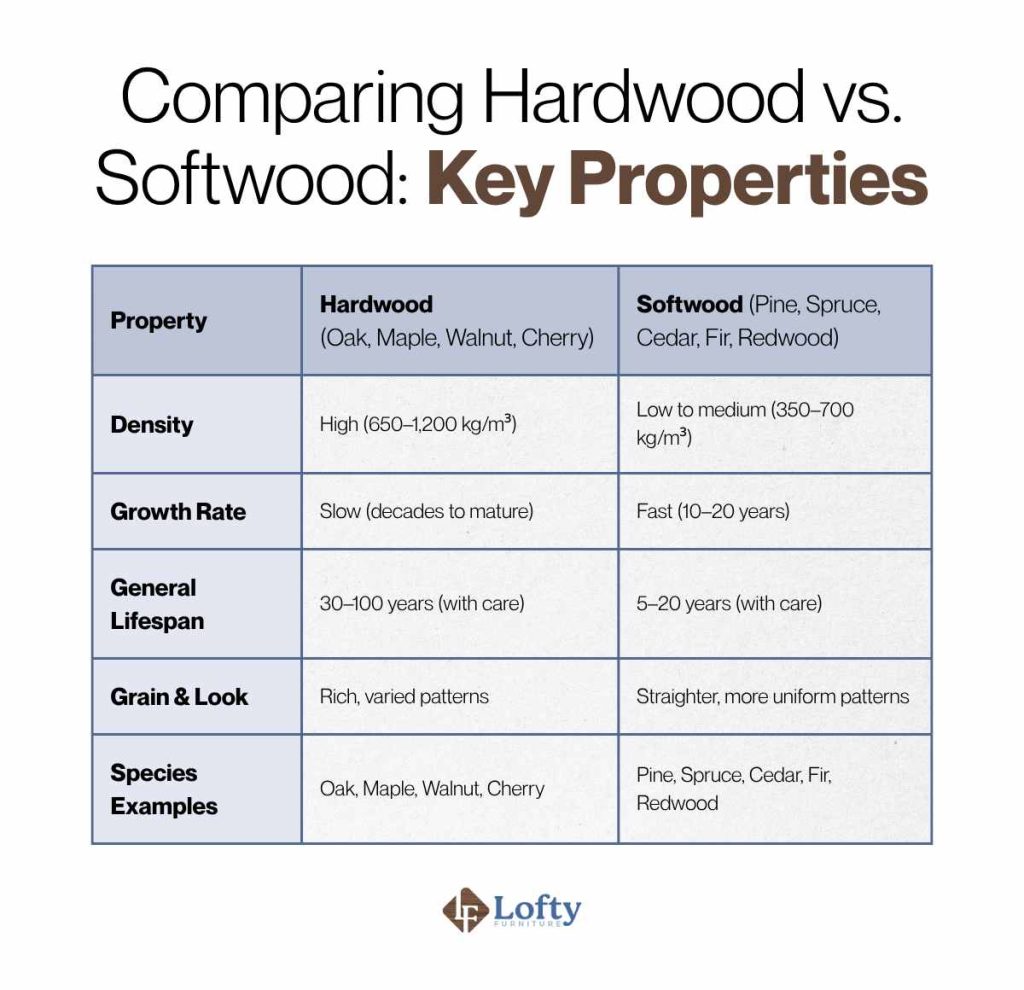
Key Differences Between Hardwood and Softwood
When selecting wood for furniture, it’s important to understand the key differences between hardwood and softwood. These distinctions can affect everything from durability to aesthetic, making it essential to choose the right material for your specific needs.
Strength and Durability
If your desk doubles as a command center, the strength of hardwood furniture is hard to beat. Hardwoods resist scratches, dents, and daily wear better than softwoods. The Janka hardness scale, which measures resistance to denting, places oak at around 1,200 lbf and maple above 1,400 lbf. Compare that with pine at 380 lbf, and you see why hardwood desks survive decades of use while softwood shelving may show dents within a few years.
That said, softwood preservation is easier in less demanding roles. Pine shelving or a cedar accent table can handle lighter loads just fine. Cedar also naturally resists insects, making it a smart choice for storage cabinets.
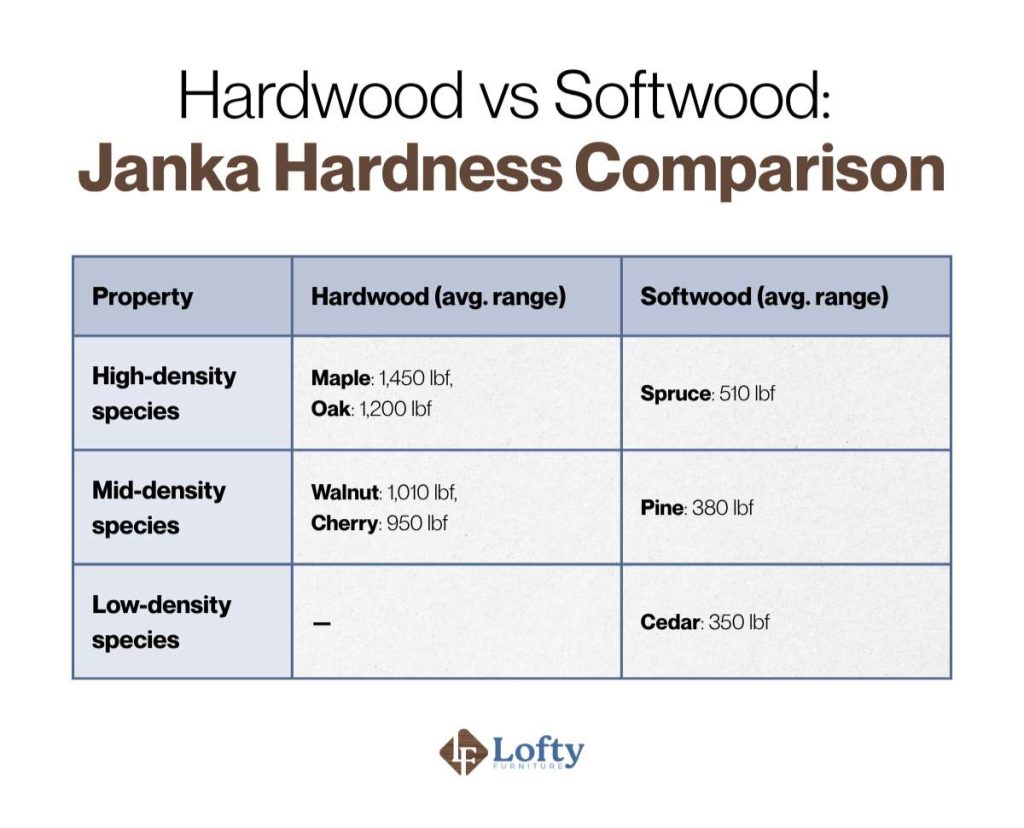
The takeaway: Hardwood is ideal for desks and bookcases that take daily pressure, while softwoods serve best in lighter roles.
Portability and Assembly
Hardwood furniture is heavy and stable, making it a long-term investment that stays in place once set up. Moving pieces like solid oak desks requires effort and often multiple people, but their weight ensures stability. Softwood furniture is lighter, easier to move, and simpler to assemble, ideal for those who value flexibility or relocate frequently.
Cost and Value Over Time
Hardwood furniture is a solid long-term investment, typically lasting 30 years or more with proper care. For instance, an Amish Executive Lift Desk made of solid hardwood combines durability and timeless design, offering decades of use. On the other hand, softwood furniture generally lasts 10–15 years, making it more suitable for short-term or secondary needs. While softwoods are budget-friendly, hardwood’s longer lifespan and repairability offer greater long-term value, with the ability to refinish or repair pieces to extend their usability.
Maintenance Requirements
Hardwoods need occasional oiling or polishing and should maintain indoor humidity to prevent warping or cracking. Softwoods are more porous, prone to dents and stains, and require gentler care. Regular dusting, sealing, and using protective mats help extend the life of both wood types.
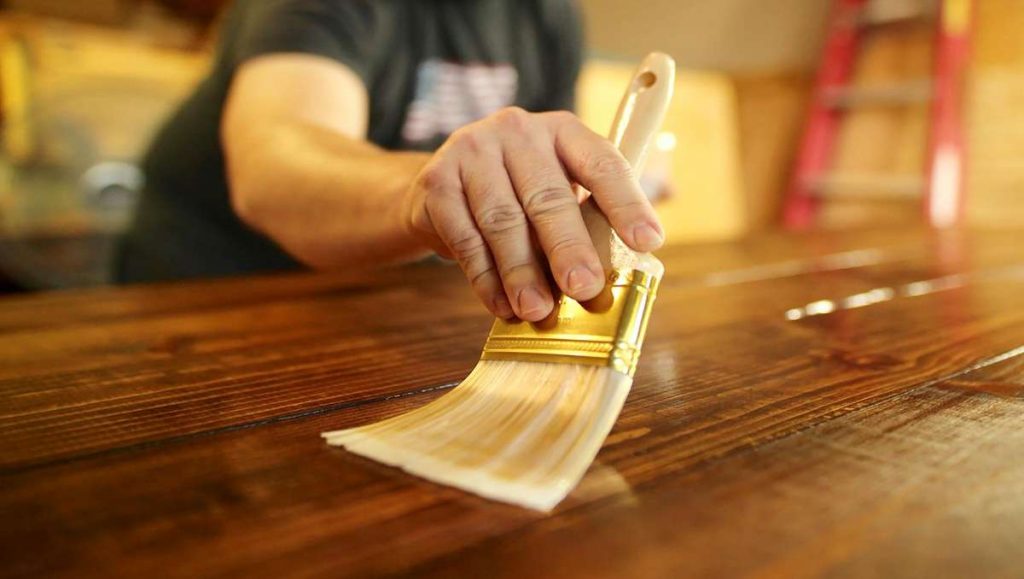
Sustainability and Environmental Impact
Hardwoods grow slowly and require certifications like FSC to ensure responsible harvesting, while reclaimed hardwood offers an eco-friendly option. Softwoods grow faster and are more renewable but have a shorter lifespan and release carbon sooner. Combining certified hardwood with softwood or bamboo creates a sustainable, balanced approach.
Which is Better for Your Home Office?
Every home office has different needs. A desk that anchors your workday, a shelf that holds years of files, or a chair that takes daily use will not all require the same type of wood. The decision is not about choosing one material over the other. It is about finding the best match between durable wood type and purpose.
Consider the daily use of each piece of furniture in your home office when choosing between hardwood and softwood.
- Desks and Work Surfaces: Hardwoods shine here. Oak and maple are resistant to dents from writing pressure, coffee mugs, and constant laptop use. A softwood desk, such as pine, may seem fine at first, but it will show marks much faster.
- Storage and Shelving: Weight matters. Use hardwood for a bookshelf loaded with heavy binders, while softwood works fine for a shelf that holds only décor or plants.
- Seating: Chairs that get daily use should lean toward hardwood for durability. Softwood frames may loosen over time, especially under constant movement.
- Accent and Occasional Pieces: Coffee tables, side tables, or small stands are good places to save money with softwoods. They face lighter use and do not carry the same load.
Hardwoods like oak and walnut add sophistication and permanence, while softwoods like pine and cedar offer a lighter, casual warmth. Combining both—such as a hardwood desk with softwood accents—creates a stylish, balanced, and durable home office.
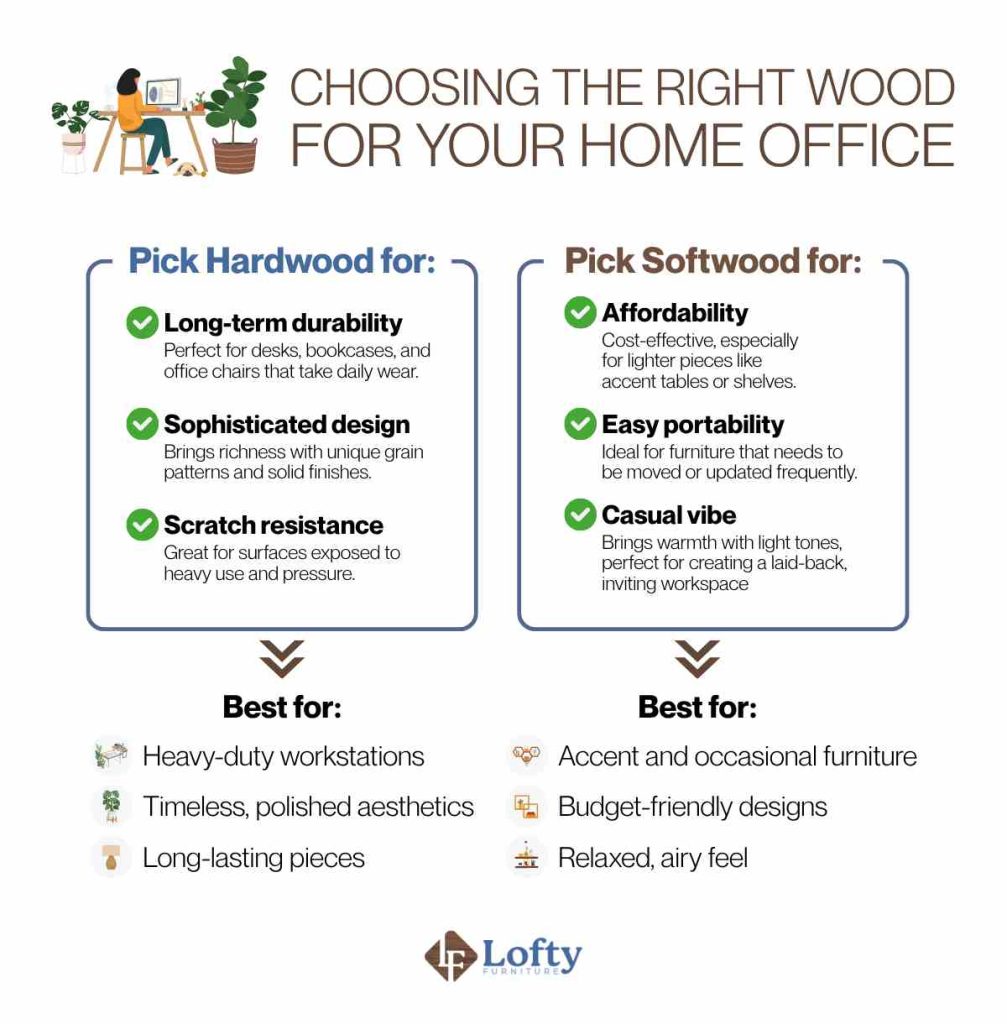
Balancing Hardwood and Softwood for Function and Style
When selecting the right wood for your home office furniture, it’s important to consider your priorities—whether that’s durability, cost, style, or maintenance. Hardwoods like oak and maple offer unmatched strength and longevity, making them ideal for high-use furniture that needs to stand the test of time. On the other hand, softwoods like pine and cedar offer a lighter, more budget-friendly option that’s perfect for accent pieces or furniture in more casual, flexible spaces.
By understanding the distinct qualities of each wood type, you can make an informed decision based on the needs of your workspace and design preferences. Ultimately, combining both hardwood and softwood pieces may provide the best balance of durability, cost-effectiveness, and aesthetic appeal for your home office.
Frequently Asked Questions
Is pine a softwood or a hardwood?
Pine is a softwood. It grows quickly, which makes it affordable and widely available. People often use pine for shelving, accent furniture, and casual home office setups. Its straight grain creates a natural, light look, but the wood dents more easily than hardwood.
Is a 2×4 considered hardwood or softwood?
A 2×4 is usually softwood, most often cut from pine, spruce, or fir. Builders choose these species because they grow quickly and are easy to cut, nail, and shape for construction. In furniture terms, a 2×4 is more suitable for framing or DIY projects than for desks or bookshelves that require durability.
Does hardwood always last longer?
Hardwood generally lasts longer than softwood because it has higher density and greater durability. With proper care, hardwood can serve for decades or even centuries. However, the exact lifespan depends on the species and the conditions it faces.
How long does softwood last?
Softwood typically lasts between 5 and 20 years, depending on the type and use. Although it does not match the longevity of hardwood, it works well for furniture designed for light wear or short-term use.
Does hardwood need to be treated?
Yes, hardwood needs occasional treatment, such as oiling, polishing, or resealing, to maintain its appearance and prevent cracking or drying out over time. Regular maintenance helps protect the wood from wear and extends its lifespan.
